If we sort within the same class the drives presented in retail according to the controllers used, then Phison and Silicon Motion will be the first in terms of quantity. Why? They offer turnkey solutions for those who want to sell SSDs under their own brand.
Now I have in my hands an inexpensive “five hundred” from MSI, the SPATIUM M390 series is just on one of the Phison controllers. Let’s see how she performs in action.
Specifications
- Form factor: M.2 2280;
- Interface: PCI-E x4 3.0 (NVMe 1.4);
- Volume: 500 GB (466 GB available);
- Controller: Phison E15T (PS5015-E15);
- Buffer: MB;
- Memory type: Micron 3D TLC;
- Sequential read/write speed: up to 3300 / 3000 MB/s;
- TBW: 200 TB;
- MTBF: 1.5 million hours;
- Maximum power consumption: 3.2W;
- Operating temperature: 0 to 70 °C;
- Dimensions: 80 x 22 x 2.2 mm;
- Warranty: 5 years (limited).
The price at the time of publication of the review is 6,000 rubles.
Appearance
MSI packed the product according to all the rules: a “cover” made of thin cardboard, inside a plastic blister to protect it from mechanical damage.
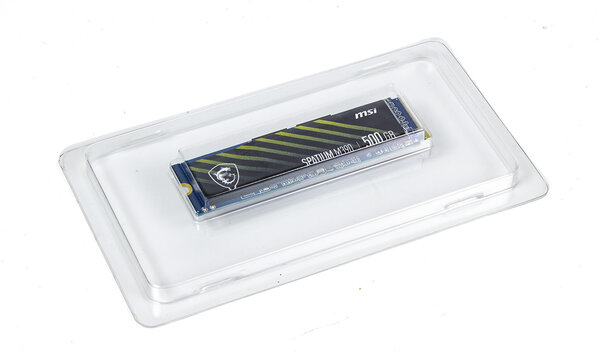
No additions are introduced into budget solutions, so the M390 looks standard: a textolite rectangle with several large microcircuits, small strapping elements. Form factor 2280, total thickness just over 2mm.
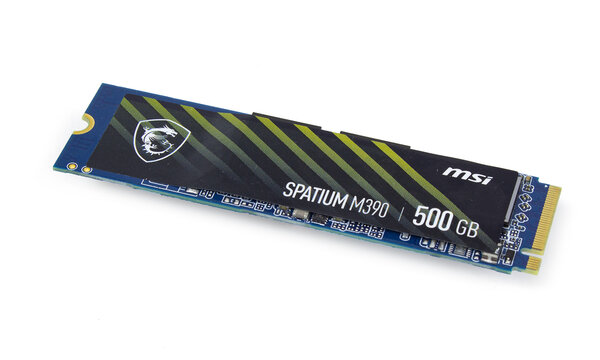
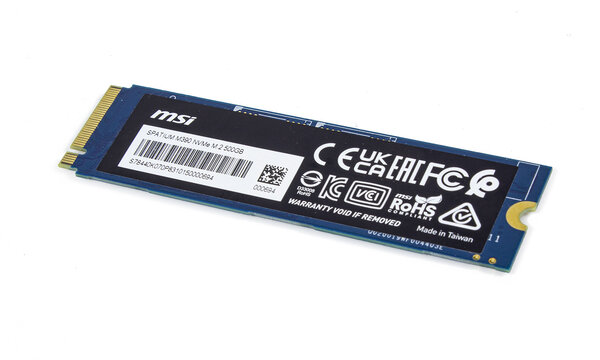
Design features
The small number of microcircuits on a textolite substrate can be easily explained: two Micron chips fit half a terabyte of 3D TLC NAND memory, the third is a controller, and a DRAM buffer is now not allowed in this class. And the controller, Phison E15T, is one of the simplest, without PCI-E 4.0 support.

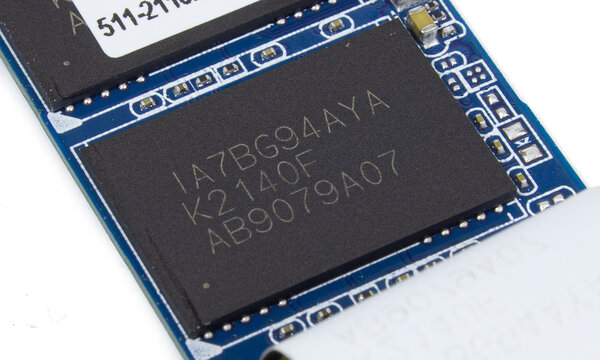
The AIDA64 utility displays all information about the drive correctly, which happens so often. However, the “platform” is well tested and explored by enthusiasts and third-party software developers.

The resource of the SPATIUM M390 is not very large – 200 terabytes, but it is quite enough for the system disk of a home PC.
Test results
The figures shown by CrystalDiskMark are higher than the maximum declared by the manufacturer – 3431 and 3071 MB / s versus 3300 and 3000 MB / s (linear read and write, respectively)
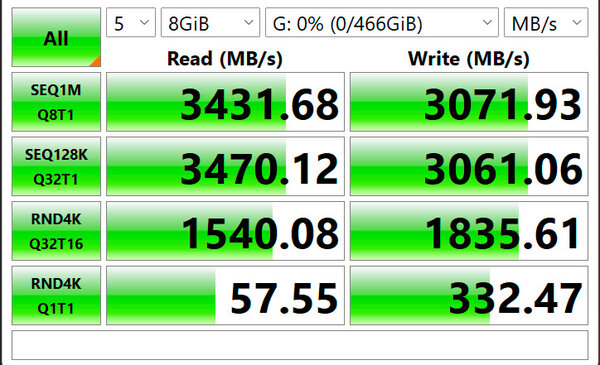
However, good speeds on small amounts of data are a common thing for modern controllers, including inexpensive rulers. Engineers optimize algorithms for the most common task profile, which is the frequent recording of small amounts of data.
AS SSD shows significantly lower numbers, but the figures do not fall below 1600 MB / s when working with small files.
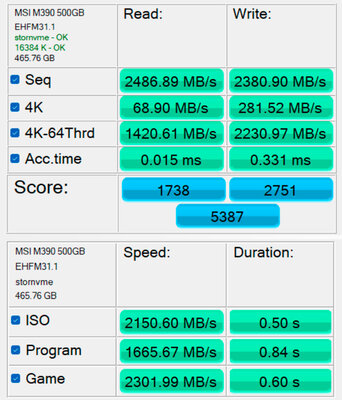
If we give tasks for the entire volume of the drive, then the linear reading speed varies from 2090 to 2900 MB / s. The SLC cache during streaming is enough for 30% of the storage capacity (a little less than 140 gigabytes), after which it drops from 2000 MB / s first to 850, and then to 250 MB / s. Rare peaks up to 2000-2400 MB / s – the controller’s attempts to quickly “scatter” a new portion of data, for which there are not enough free resources.
Random reads and writes look optimistic: about 500 MB/s with sharp jumps to 1390 and 850 MB/s (read and write, respectively).


SPATIUM M390 has another important point – heating during operation. Without a heatsink, the temperature of the controller in idle or light load is no more than 50 degrees, but with active use it smoothly rises to 70 degrees or more. With a long recording cycle (more than a minute), it rests on the mark of 79 degrees, after which the recording speed drops.
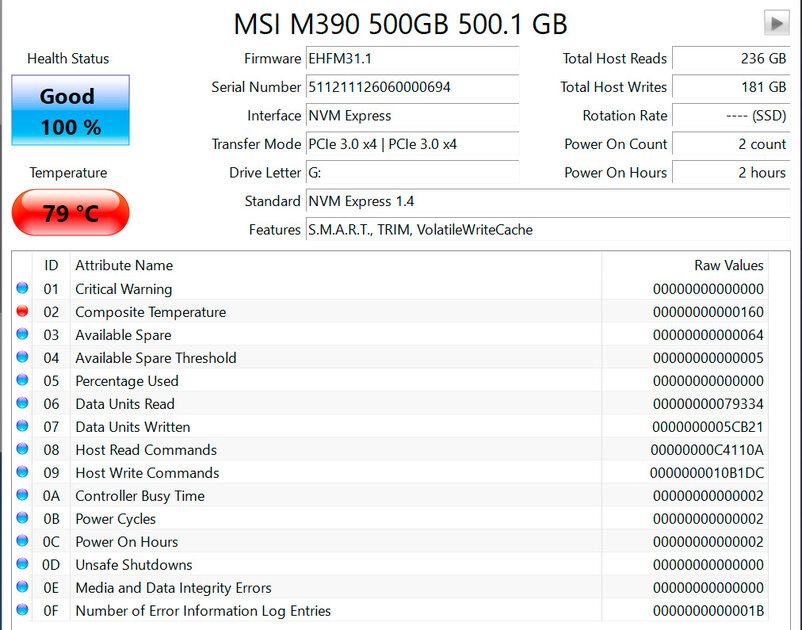
If you install a radiator (for example, an aluminum plate, motherboards of the middle and upper price categories are often equipped with such), then the heating is reduced by 15-20 degrees, depending on the operating mode.
Summing up
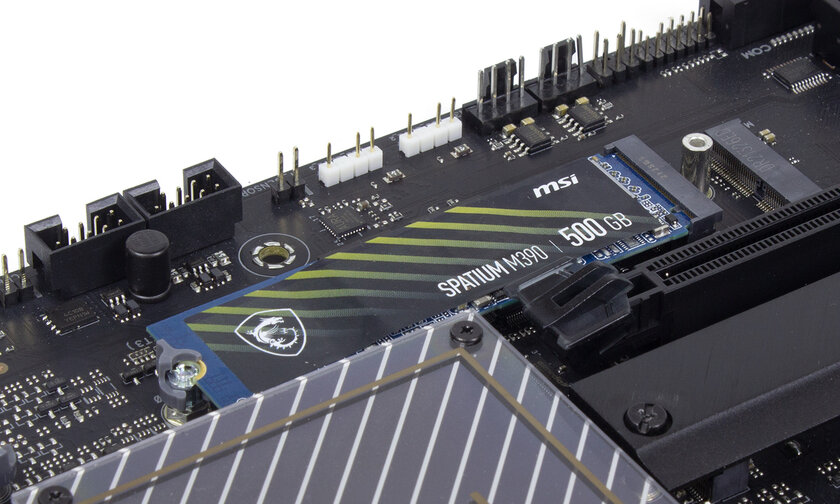
MSI SPATIUM M390 is an interesting SSD, well suited for installation in a work or gaming configuration as a system disk. There are two points: the obligatory use of a radiator and a strong drop in speed when writing a large amount of data. In other words, if you often work with large files, then it is better to allocate a separate drive suitable for such work for them (or the cache of processing programs).
pros
- Good read/write speeds for this class.
- Modern element base.
- Good resource.
Might not like it
- Significant heating.
Source: Trash Box
Donald-43Westbrook, a distinguished contributor at worldstockmarket, is celebrated for his exceptional prowess in article writing. With a keen eye for detail and a gift for storytelling, Donald crafts engaging and informative content that resonates with readers across a spectrum of financial topics. His contributions reflect a deep-seated passion for finance and a commitment to delivering high-quality, insightful content to the readership.







